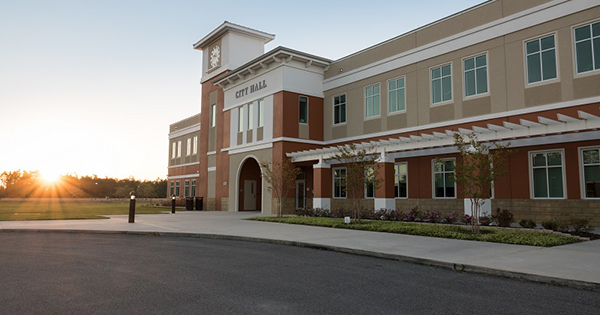Tuesday at 6 pm, the Palm Coast City Council held their evening workshop meeting at city hall. Residents were able to speak during the first portion of the workshop meeting, during public comment, followed by a presentation on the Utility rate increase that many residents have heard about.
The presentation was given by the Director of Stormwater Engineering, Director Cote, and the consulting agency’s representative. Cote started his presentation with a brief history, which included when the Utility Corporation was established in 1970 by ITT Community Development Corporation. In 2003, the City of Palm Coast purchased the utility. Cote continued explaining that new facilities and expansions are needed to meet the needs of current and future growth, keep up with the aging infrastructure, and comply with regulatory requirements set by the Florida Department of Environmental Protection.
Cote went on to explain the infrastructure that currently exists and their maximum capacity. Palm Coast has two wastewater plants and three water treatment plants, as well as over 56 thousand meters, 177 lift, and pump stations, over 17 thousand pep tanks, 4 thousand fire hydrants, 67 production wells, six water storage tanks, 830 miles of water main, 700 miles of sewer main and 75 miles of reclaimed main piping.
There are eight divisions within the utility department, consisting of 166 full-time employees, in a 24/7 operation. Cote continued by explaining that Utilities are expensive to maintain and upkeep and that the Utility department is run by an enterprise fund and not supported by the General Fund. Cote continued by stating, “The Utility Department has taken all necessary steps to minimize the financial impact to Palm Coast residents”.

Cote continued on with the presentation, stating the need for impact fees to be reviewed, and updated, and to ensure they comply with state statutes to ensure growth is paying for growth. The City of Palm Coast Council approved a piggyback contract back in February of 2022 to review rates, and impact fees for services, and the only implementation that was taken was in May of 2024 when the City Council voted to raise impact fees only. New Utility Agreements were also reviewed and the proposed change would be to include a charge of $75.00 for Water and $3,500 for sewer for new developments. Utility rates were the last set of rates to be discussed in the presentation, and the proposed increases came with multiple options. Option one was an annual increase of as much as 15% each year in the first three years of the forecasted period, with the payment getting lower the more the debt is paid off. Option two makes use of capitalized interest and deferred payments, which provides an extra year or two before the costs increase much greater, and then follows option one where as the loans start being paid off the payments would lessen. Option three is allowing the financial advisor the ability to look at the system and level all the debt service payments for as long as possible. Option four is similar to option two, where the advisor uses capitalized interest and deferred principal payment which creates a slightly higher scenario than option three. The consultant stated that after reviewing all the options, options one and three were the most ideal, with option one having an annual increase of as much as 15% over the first three years. Option three however has a customer bill impact of roughly 8% less than scenario one, so while the long-term cost may be higher, the impact is less. The proposal by staff and the consultant is option three with a first adjustment of 8% as early as April 1st, 2025, and the next increase each October after, starting as early as October 1st, 2025. The 8% increase would apply to all rates uniformly. This rate increase of 8% would be for the first four years, and in the fifth year of the 10-year plan when the City would reimplement its 4% CPI index.
Ultimately, after a lengthy discussion on the dais, the council gave consent to have this item on the agenda for the March 4th evening business meeting as an ordinance for the first read.










